Anahita Temple | Temple of an Ancient Iranian Goddess
The Temple of Anahita in Kangavar, Iran, stands as a testament to ancient reverence for water, fertility, and wisdom.
Dating back to the Achaemenid, Parthian, and Sassanian periods, this sacred site embodies centuries of Iranian cultural heritage. As the second-largest stone structure in Iran after Persepolis, the temple's architectural grandeur reflects its historical significance. Dedicated to Anahita, the goddess of water and fertility, it served as a center for religious worship and spiritual devotion.
Today, the Temple of Anahita in Kangavar continues to draw visitors from around the world, offering a glimpse into Iran's rich cultural and religious traditions.
Temple of Anahita Historical Background
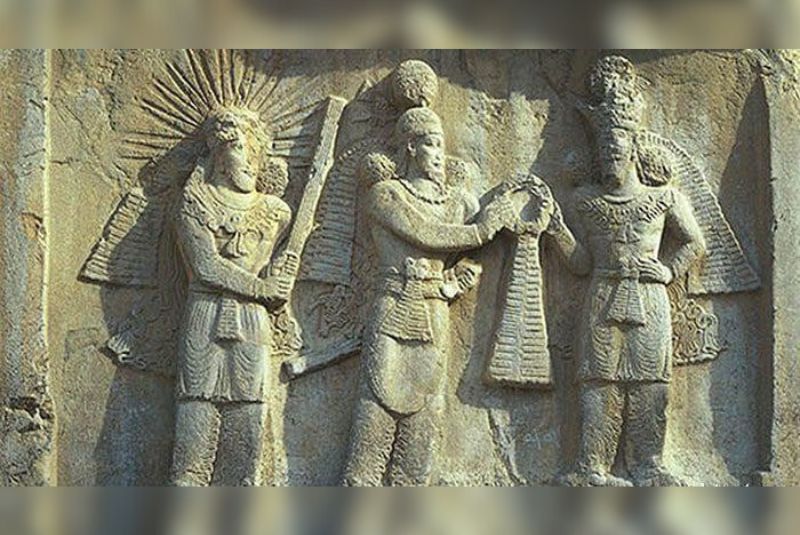
The origins of Anahita worship in ancient Iran trace back to the Avestan texts, where she appears as Aredvi Sura Anahita, revered as the divinity of "the Waters." Anahita embodies concepts of fertility, healing, and wisdom, symbolizing the life-giving properties of water in Iranian cosmology. Over time, Anahita's cult grew in prominence, becoming integral to religious practices and societal beliefs.
During the Achaemenid, Parthian, and Sassanian periods, the construction of the Temple of Anahita marked a tangible expression of devotion to the goddess. As one of the earliest known sites dedicated to Anahita, the temple served as a center for religious rituals, offering prayers for abundance and prosperity. Its strategic location on a hill in Kangavar, Iran, underscored its significance as a sacred space.
The evolution of the temple's architecture and religious significance reflects changes in Iranian society and governance. Initially built during the Achaemenid era, the temple underwent modifications and expansions under successive rulers, including the Parthians and Sassanians. These alterations reflected shifts in religious beliefs and cultural practices, with each period leaving its mark on the temple's design and purpose.
Over time, the Temple of Anahita became not only a place of worship but also a symbol of Iranian identity and heritage. Its architectural features, such as thick walls, entrance stairs, and rows of columns, reflected the artistic and engineering prowess of ancient Iranian civilizations. Additionally, the temple's religious significance extended beyond Iran's borders, attracting pilgrims and visitors from neighboring regions.
The Temple of Anahita stands as a testament to the enduring legacy of Anahita worship and Iranian cultural heritage. Through its construction and evolution, the temple has played a vital role in shaping religious beliefs and societal values, leaving behind a rich tapestry of history and tradition for future generations to explore.
| Read more: Pasargadae - Legacy of Cyrus the Great & Ancient City
Temple of Anahita Architecture
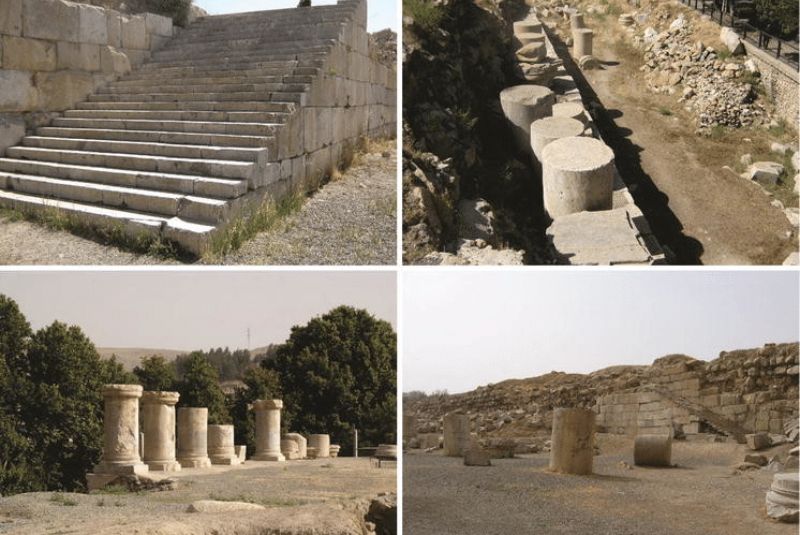
The Temple of Anahita boasts a distinctive layout nestled atop a hill in the Kangavar plain, commanding a striking presence against the horizon. Its elevated position underscores its spiritual significance and offers panoramic views of the surrounding landscape. The temple's strategic location accentuates its connection to nature and water, aligning with the worship of Anahita, the goddess associated with fertility and the life-giving properties of water.
Architecturally, the temple features a series of unique elements that set it apart from other ancient Persian structures. Thick walls, constructed from stone carcasses and plaster mortar, form a sturdy foundation that has withstood the test of time. These walls not only provide structural support but also serve as a canvas for intricate carvings and inscriptions, depicting scenes from religious mythology and daily life.
The entrance stairs, extending from the southern side of the temple, guide visitors towards the main platform with precision and grandeur. Crafted from stone blocks and adorned with meticulous detailing, these stairs evoke a sense of reverence and anticipation as one ascends towards the sacred space. The absence of shelters or defensive structures on the stairs suggests a focus on spiritual contemplation rather than military fortification.
Rows of columns, towering three times their diameter, line the walls of the temple, symbolizing strength and stability. These columns not only support the temple's roof but also create a sense of enclosure and sanctuary within the sacred space. Unlike Greek columns with ornate designs, the columns of the Temple of Anahita are simple yet imposing, reflecting the austerity and grandeur of ancient Persian architecture.
Compared to other ancient Persian temples and religious structures, the Temple of Anahita stands out for its integration of natural elements and symbolic motifs. While sharing similarities with Persepolis and other Achaemenid-era sites, the temple's focus on water worship and fertility distinguishes it as a unique cultural landmark. The presence of an Anahita Goddess statue would further enhance the temple's religious significance and artistic expression.
| Related: Fire Temple - The Holy Places Where Zoroastrians Worship God
Cultural and Religious Significance
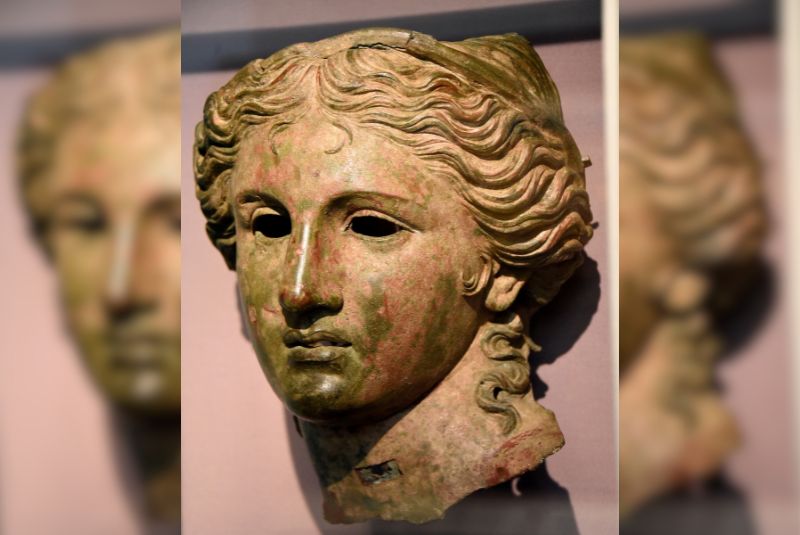
Anahita, known as Aredvi Sura Anahita in ancient Iranian mythology and Zoroastrianism, occupies a central place in the religious and cultural landscape of Iran. As the divinity of "the Waters," Anahita embodies concepts of fertility, healing, and wisdom, symbolizing the life-giving properties of water. In Zoroastrianism, she is venerated alongside other celestial beings as a protector and nurturer of the natural world.
Water symbolism plays a crucial role in Anahita worship, reflecting the importance of water in sustaining life and nourishing the earth. Anahita's association with water signifies purification, renewal, and abundance, with devotees seeking her blessings for fertility, prosperity, and protection. Purification rituals, involving the use of water in ceremonies and prayers, aim to cleanse the body, mind, and spirit, fostering a sense of spiritual purity and harmony.
The cult of Anahita exerted a profound influence on Iranian society and religious practices, shaping beliefs, rituals, and cultural traditions. Temples dedicated to Anahita served as focal points for communal worship and religious festivals, attracting pilgrims and devotees from across the region. The celebration of Anahita's festivals, such as the day of her birth, underscored her significance as a divine figure worthy of reverence and devotion.
Anahita's cult also influenced artistic expression and iconography, with depictions of the goddess appearing in various forms, including statues, reliefs, and symbols. Her image adorned coins, seals, and other artifacts, attesting to her enduring popularity and cultural significance. Additionally, Anahita's teachings and values, emphasizing compassion, generosity, and harmony with nature, permeated Iranian society, fostering a sense of community and shared identity among believers.
| Discover: Cyrus The Great – The Most Powerful King in The World
Archaeological Discoveries in the Temple of Anahita
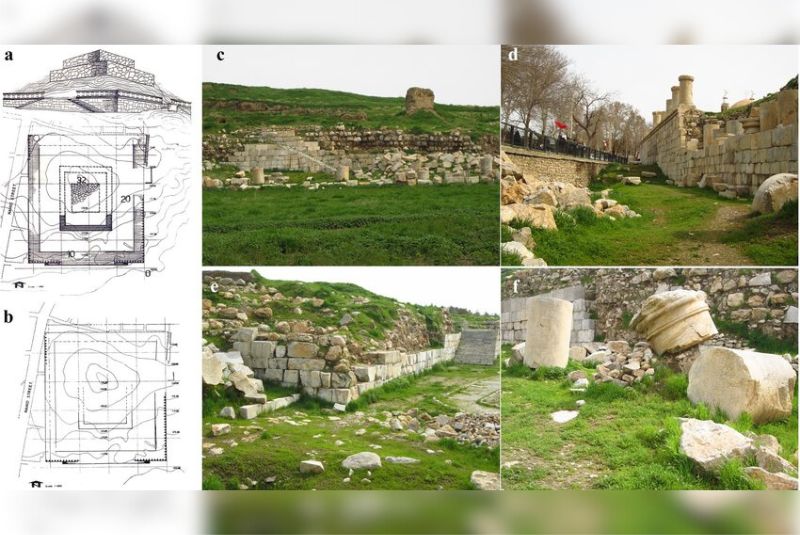
Excavations at the Temple of Anahita site have unearthed a treasure trove of artifacts and structures, shedding light on ancient Iranian civilization and religious practices. Archaeologists have discovered a wealth of artifacts, including pottery, coins, and religious objects, providing insights into the material culture of the time. Additionally, the remains of structures such as walls, platforms, and graves offer valuable clues about ancient urban development and burial practices.
One of the most intriguing discoveries relates to ancient burial practices near the temple site. Archaeologists have unearthed graves dating back to the Parthian period, revealing boat-shaped coffins and burial goods indicative of ceremonial rituals. These graves offer glimpses into the funerary customs and beliefs of ancient Iranians, including the use of symbolic objects and offerings for the journey to the afterlife.
Furthermore, excavations have revealed evidence of urban development around the temple complex, suggesting the presence of a thriving community in ancient Kangavar. The discovery of brick walls and residential units from the Seljuk period highlights the long history of human occupation in the area and the evolution of urban life over time.
Efforts to preserve the heritage of the Temple of Anahita are ongoing, with researchers and conservationists working tirelessly to protect the site from damage and deterioration. Preservation initiatives include the stabilization of structures, the documentation of archaeological finds, and the implementation of visitor management strategies to minimize human impact on the site.
Ongoing research at the temple site continues to yield new discoveries and insights into ancient Iranian civilization. Archaeologists are employing advanced techniques such as ground-penetrating radar and 3D imaging to uncover hidden structures and artifacts buried beneath the surface. These efforts are crucial for expanding our understanding of the temple's significance and ensuring its preservation for future generations to explore and appreciate.
| Also read about: Persepolis City - The Great Ancient Persian Capital
Temple of Anahita Tourism and Visitor Experience

The Temple of Anahita exerts a magnetic pull on both tourists and scholars, beckoning them to explore its ancient mysteries and architectural grandeur. Tourists are drawn to the site by its historical significance and spiritual aura, eager to immerse themselves in Iran's rich cultural heritage. The temple's strategic location in the Kangavar plain adds to its allure, offering visitors a breathtaking backdrop against which to ponder its ancient origins and cultural significance.
For scholars, the Temple of Anahita presents an opportunity to delve into the depths of Iran's past and unlock the secrets of its ancient civilizations. Through meticulous study and research, scholars seek to unravel the temple's architectural complexities, religious symbolism, and historical context. Their findings contribute to our understanding of Iran's cultural heritage and shed light on the religious beliefs and societal practices of ancient civilizations. The temple's significance as a center of Anahita worship adds an additional layer of intrigue, inviting scholars to explore its role in shaping religious devotion and cultural identity.
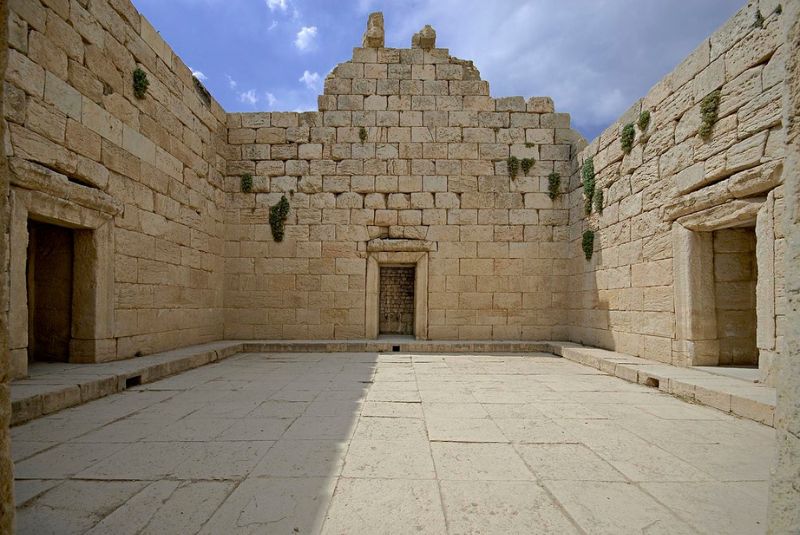
Promoting awareness and appreciation of Iran's cultural heritage is paramount to ensuring the preservation of sites like the Temple of Anahita for future generations. By sharing the stories and significance of these ancient landmarks, we can inspire a deeper understanding and appreciation of Iran's rich cultural legacy. Through educational programs, outreach initiatives, and responsible tourism practices, we can raise awareness about the importance of preserving and protecting Iran's cultural heritage for posterity.
Located in the heart of the Kangavar plain, the Temple of Anahita is accessible via several access paths, making it easily reachable for visitors from near and far. Travelers can visit the temple from nearby cities such as Kermanshah and Hamedan, traversing scenic routes that offer glimpses of Iran's stunning natural landscapes. Once at the site, visitors can explore the temple's ruins and surrounding area, soaking in the history and spirituality of this ancient pilgrimage site. Whether arriving by car or public transportation, the journey to the Temple of Anahita promises an unforgettable experience steeped in Iran's rich cultural heritage.
| Read more: Naqsh-e Rustam - Ancient Treasures & Zoroastrian Legacy
Temple of Anahita Location
Finally!
The Temple of Anahita stands as a symbol of Iran's cultural legacy, embodying millennia of history, spirituality, and architectural prowess. Its significance extends beyond its ancient ruins, serving as a testament to the enduring heritage of Iran and the resilience of its people. By promoting awareness and appreciation of Iran's cultural heritage, we can ensure that treasures like the Temple of Anahita continue to inspire and captivate future generations. Let us heed the call to action to explore, preserve, and cherish this sacred site, honoring its legacy and safeguarding it for the enjoyment of generations to come.
Share your story!
Comment below and let us know about your Experience.
Your story inspires others!


Comment
Leave a Comment